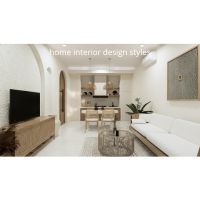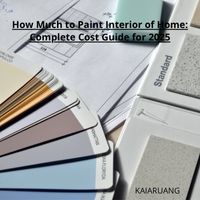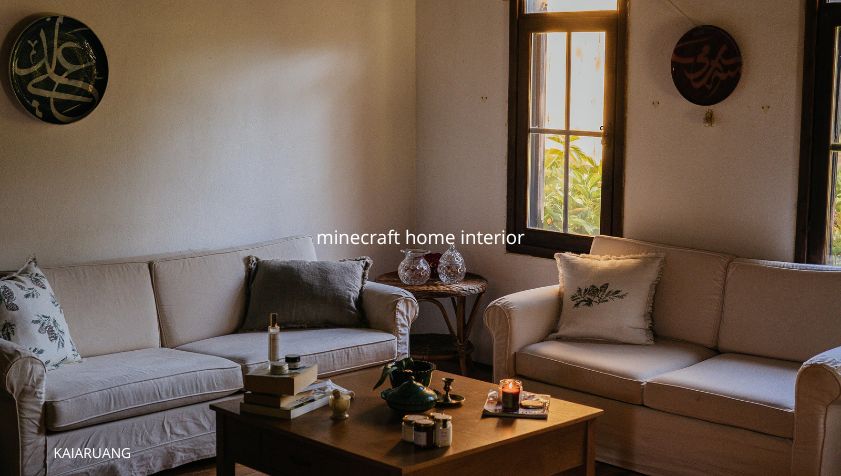Home Interior Design Styles
Your home is a reflection of your personality, and understanding different home interior design styles is the first step in creating a space that truly represents who you are. From modern simplicity to rustic charm, every style tells a story through color, texture, and materials.
This article will explore the most popular home interior design styles you can use to decorate your home — from timeless classics to contemporary designs. You’ll also learn how to combine elements from various styles to create a space that feels uniquely yours.
Why Understanding Interior Design Styles Matters
Many homeowners start decorating their homes without a clear plan or theme, which often leads to inconsistent results. Knowing your preferred design style helps you:
-
Choose the right furniture and décor pieces.
-
Create visual harmony and balance.
-
Avoid clutter or mismatched design elements.
-
Stay consistent throughout your home.
Once you understand the basic interior design styles, you’ll be able to mix and adapt them easily to match your needs and personality.
1. Modern Interior Design
Modern design is all about simplicity, clean lines, and functionality. It focuses on open spaces, natural light, and minimal clutter.
Key features:
-
Neutral color palette: white, gray, beige, and black.
-
Sleek materials such as glass, metal, and polished wood.
-
Furniture with straight edges and smooth surfaces.
-
Minimal decorative accessories.
Modern interiors feel spacious, organized, and elegant — perfect for people who love a calm, uncluttered lifestyle.
2. Contemporary Interior Design
Often confused with modern style, contemporary design evolves with current trends. It combines comfort with elegance and often includes artistic touches.
Key features:
-
Mix of textures: wood, metal, and fabric.
-
Use of neutral tones with bold accent colors.
-
Simple shapes with a focus on comfort.
-
Incorporation of sustainable or natural materials.
Contemporary design offers flexibility, allowing homeowners to experiment with modern trends while keeping the space timeless.
3. Minimalist Interior Design
Minimalism focuses on “less is more.” Inspired by Japanese design principles, it prioritizes simplicity, functionality, and serenity.
Key features:
-
Limited color palette: mainly white, gray, and black.
-
Open spaces with minimal furniture.
-
Hidden storage to reduce visual clutter.
-
Emphasis on natural light and clean lines.
A minimalist home promotes mindfulness and calmness — perfect for those who prefer simplicity and balance in their environment.
4. Scandinavian Interior Design
Originating from Nordic countries, Scandinavian design combines functionality with warmth. It is known for creating cozy, light-filled spaces.
Key features:
-
White or light neutral walls to enhance brightness.
-
Natural wood furniture and floors.
-
Textiles like wool, linen, and fur for warmth.
-
Green plants for freshness.
This style is ideal for those who love comfort, natural light, and clean design aesthetics.
5. Industrial Interior Design
Inspired by urban lofts and warehouses, industrial design exposes raw materials to achieve a rugged look.
Key features:
-
Exposed brick walls, concrete floors, and metal fixtures.
-
Open layouts with minimal partitions.
-
Dark, earthy tones such as gray, brown, and black.
-
Reclaimed wood and vintage lighting.
Industrial interiors suit modern city dwellers who enjoy bold, masculine aesthetics with a touch of history.
6. Rustic Interior Design
Rustic design brings the beauty of nature indoors. It focuses on natural materials and earthy colors.
Key features:
-
Wooden beams, stone walls, and handmade furniture.
-
Warm tones such as brown, beige, and green.
-
Cozy textiles like wool, cotton, and leather.
-
Vintage or antique decorative pieces.
Rustic homes feel grounded and welcoming, making them perfect for countryside living or people who love natural charm.
7. Traditional Interior Design
Traditional style draws inspiration from 18th- and 19th-century European homes. It’s elegant, timeless, and rich in detail.
Key features:
-
Ornate furniture with carved details.
-
Rich colors like burgundy, gold, and navy blue.
-
Heavy drapes and patterned fabrics.
-
Classic artwork and symmetrical layouts.
This style is ideal for those who love sophistication and historical charm.
8. Bohemian (Boho) Interior Design
Bohemian design is all about creativity, freedom, and individuality. It mixes textures, colors, and cultures in an effortless yet stylish way.
Key features:
-
Vibrant colors like orange, red, purple, and turquoise.
-
Patterned textiles, rugs, and wall hangings.
-
Eclectic décor items from around the world.
-
Plants, candles, and personal art collections.
Boho interiors are perfect for free spirits who love mixing old and new in a playful way.
9. Farmhouse Interior Design
The farmhouse style combines rustic charm with modern comfort. It’s warm, inviting, and family-oriented.
Key features:
-
Shiplap walls and vintage-style furniture.
-
White or neutral base with wooden accents.
-
Cozy textiles like cotton and linen.
-
Simple, functional décor pieces.
Farmhouse interiors create a sense of nostalgia and comfort — a perfect blend of old and new.
10. Transitional Interior Design
Transitional design merges traditional and modern elements for a balanced and timeless look.
Key features:
-
Neutral color palette.
-
Mix of classic and modern furniture.
-
Focus on comfort and simplicity.
-
Limited use of decorative accessories.
This style suits homeowners who appreciate both classic elegance and contemporary simplicity.
Combining Different Design Styles
You don’t have to stick to just one style. Mixing styles can create a unique and personalized home — as long as you maintain balance and consistency. Here are a few tips:
-
Choose one dominant style as your base.
-
Add accent pieces or colors from another style.
-
Use similar materials or tones to keep harmony.
-
Avoid overcrowding the room with too many patterns.
For example, you can combine Scandinavian minimalism with industrial elements like metal lamps and exposed brick for a modern yet cozy look.
Conclusion
Choosing the right home interior design style allows you to express your personality and create spaces that bring you joy every day. Whether you prefer minimalist calm, rustic warmth, or modern elegance, the best style is one that feels like home to you.
With an understanding of these styles, you can confidently decorate your home with harmony, comfort, and beauty — making it a true reflection of your taste and lifestyle.
Source:
Architectural Digest, Elle Decor, House Beautiful, The Spruce, Home & Gardens (2025 Edition).



